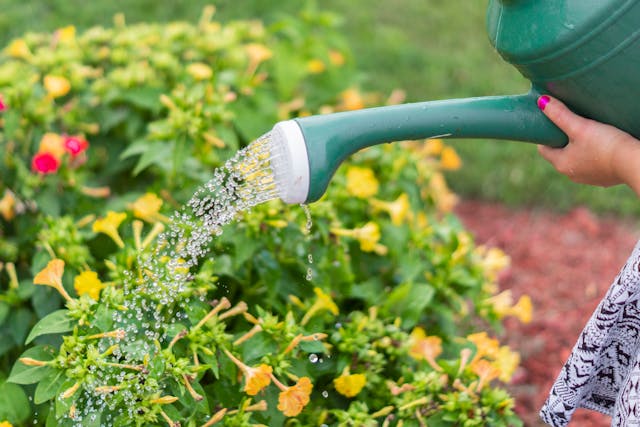- Summer gardening requires adjusting tactics to deal with heat and changing climate.
- Mulching is important for retaining soil moisture and protecting plants’ root systems.
- Watering in the early morning or late afternoon, deeply and less frequently, is ideal during summer.
- Choosing heat-tolerant plant varieties can improve your chances of successful gardening in hot conditions.
Gardening is a labor of love that is deeply rewarding but comes with unique challenges, particularly in the sizzling summer months. The allure of nurturing vibrant flora under the summer sun is often accompanied by less appealing experiences, such as heat exhaustion, sunburn, and the wilting of our beloved plants. However, a few strategic adjustments can turn a potentially taxing season into a flourishing time for gardeners.
Understanding the Challenges of Summer Gardening
The summer season presents a trifecta of troubles for avid gardeners. First, there’s the personal challenge — the rising mercury threatens to turn your gardening oasis into a sweltering inferno. Then, there’s the peril to the well-being of your plants, which are at risk of drying out and withering. Lastly, there’s the time constraint — the window for effective work in the garden without the risk of overheating is small.
To counter these challenges, gardeners must act preemptively with common sense, resourcefulness, and a dash of innovation. Here, we will illustrate strategies to help you stay comfortable while ensuring your garden remains on the path to a successful season.
Key Strategies for Comfortable Summer Gardening
Whether you have the luxury of a spacious garden or a modest balcony patch, these strategies will ensure your summer garden is a place of solace rather than a place of apocalyptic heat battles.
1. Get a Greenhouse
A greenhouse is a perfect solution for maintaining the right temperature, humidity, and protection for your plants during the hot summer months. It provides shelter from harsh sunlight and allows you to control the environment inside, creating an ideal atmosphere for your plants to thrive.
But don’t just get any greenhouse; get a gothic greenhouse. This lends an aesthetic air to your gardening space and is a clever ally against the heat. Its optimized design makes gothic greenhouses tall and airy, giving plants room to breathe without trapping heat, unlike many traditional models. The roof’s high curvature helps deflect direct sunlight, preventing scorching.
2. Schedule Gardening Tasks Wisely
The key here is to befriend the cooler parts of the day. Early morning or late afternoon are your prime times. Venturing out with your watering can at high noon is like volunteering for an arid marathon. Your garden tasks should be structured around these cooler windows, ensuring your and your plants’ well-being.
You should also be mindful of the weather forecast and plan accordingly. If a heatwave is on its way, get all your gardening tasks done beforehand or postpone them to another day when the temperature is more favorable.
3. Wear Appropriate Clothing
Appropriate attire during summer gardening cannot be overstated. Opt for light, breathable fabrics that cover as much of your skin as possible to prevent sunburn and insect bites. A wide-brimmed hat is your crown, and sunscreen your armor in the battle against UV rays.
4. Stay Hydrated
Your body’s water reserves are like the soil moisture for your plants — crucial. Dehydration can creep up on you, especially when you are absorbed in garden toil. Keep water within arm’s reach, and replenish yourself regularly. Remember to sip, not gulp, for a sustained hydration plan.
Doctors recommend drinking about half a liter of water per hour while engaging in moderate physical activity, but that amount can vary depending on the individual and the intensity of the heat.

5. Use Cooling Aids
Modern gardening has its perks, and one of the crown jewels is the array of cooling contraptions you can use. From bandanas infused with polymers that hold water around your neck to portable fans that mist water, technology has provided plenty of options to take the edge off your gardening experience.
Maintaining Plant Health in Heat
Your gardening tactics must also adjust to the changing climate. Mulching the beds can help retain soil moisture, protecting your plants’ delicate root systems from the blistering sun.
Adjusting Watering Schedules
Water is life for your plants, especially during summer. However, the evaporation rate is high, so early morning or late afternoon watering is most effective. A thorough, deep watering less frequently is better than shallow, frequent watering, encouraging shallow root growth.

Choosing Heat-Tolerant Varieties
Plant breeders have developed varieties of flowers and vegetables specifically adapted to thrive in hot conditions. Seek out these champion plants to join your summer arsenal. They’ll thank you for it with their resilience and vibrant growth.
Final Thoughts
With all its challenges, summer gardening remains a delightful and calming pursuit. By implementing the strategies outlined here, you can manage the heat, stay comfortable, and nurture a garden that flourishes against all odds. Remember, gardening in summer is a dance. It requires moving with the elements’ rhythm fairly or through strategic planning.
